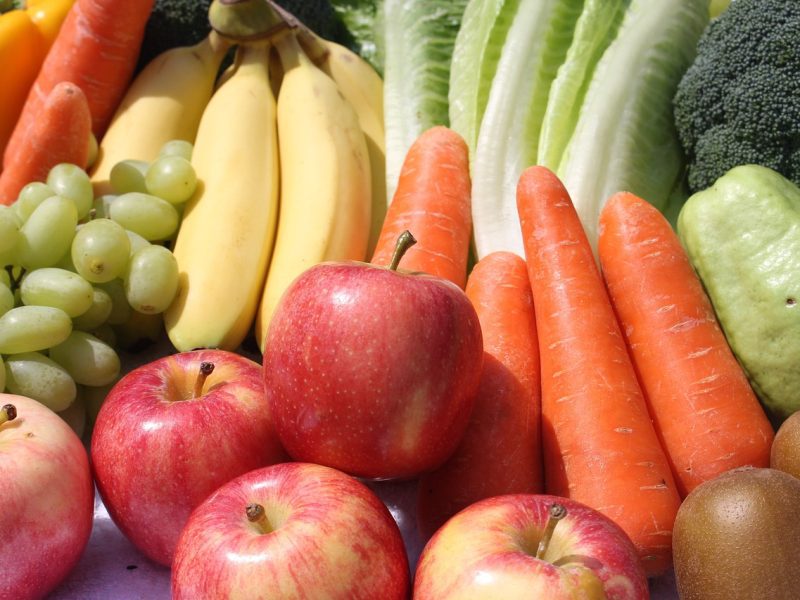Gout is a painful and debilitating form of arthritis that affects millions of people worldwide. While medication can help to manage gout symptoms, the foods we eat also play a crucial role in controlling the disease. Certain foods can trigger gout attacks by increasing the levels of uric acid in the blood, while others can help to reduce inflammation and alleviate symptoms. In this blog post, we will explore the link between gout and diet and discuss the foods to eat and avoid for people with gout. Whether you are living with gout or looking to reduce your risk of developing the disease, understanding the impact of diet on gout is essential for maintaining good health and wellbeing.
Foods to Avoid – High-Purine Foods
High-purine foods are foods that contain high levels of purines, a compound that is broken down into uric acid in the body. When uric acid levels in the blood become too high, urate crystals can form in the joints, leading to gout attacks. Therefore, it is essential for people with gout to avoid high-purine foods to help control their symptoms.
Some examples of high-purine foods include:
- Organ meats, such as liver, kidney, and sweetbreads
- Seafood, such as anchovies, sardines, mussels, and scallops
- Red meat, including beef, pork, and lamb
- Game meats, such as venison and rabbit
- Some types of fish, including tuna, haddock, and trout
While some high-purine foods are more problematic than others, people with gout are generally advised to limit their intake of all high-purine foods.
High-purine foods are bad for gout because they can cause a buildup of uric acid in the blood, which can lead to gout attacks. When uric acid levels are too high, the kidneys may not be able to remove all of the excess uric acid, leading to the formation of urate crystals in the joints. These crystals can cause inflammation, pain, and swelling, which are the hallmark symptoms of gout. Therefore, avoiding high-purine foods is an important step in managing gout symptoms and preventing future attacks.
It’s worth noting that while high-purine foods should be avoided by people with gout, they are not the only cause of high uric acid levels in the blood. Other factors that can contribute to gout include genetics, being overweight, certain medications, and alcohol consumption. Therefore, it’s essential to work with a healthcare professional to develop a comprehensive treatment plan that takes all of these factors into account.
Foods to Avoid – Foods High in Fructose
Foods high in fructose are foods that contain significant amounts of fructose, a type of sugar found naturally in fruits and honey, as well as added to many processed foods and beverages. Fructose consumption has been linked to an increased risk of gout attacks, making it important for people with gout to avoid foods high in fructose.
Some examples of foods high in fructose include:
- Soft drinks and other sugary beverages
- Candy and other sweets made with high-fructose corn syrup
- Fruit juices and other sweetened drinks
- Processed foods, such as baked goods and desserts
Fructose is bad for gout because it can lead to an increase in uric acid levels in the blood. When fructose is metabolised in the liver, it can lead to an increase in the production of purines, which are then broken down into uric acid. This can lead to the formation of urate crystals in the joints, triggering gout attacks.
In addition to contributing to gout attacks, fructose consumption has also been linked to other health problems, including obesity, type 2 diabetes, and heart disease. Therefore, reducing or eliminating foods high in fructose can have broader health benefits beyond just managing gout.
Overall, avoiding foods high in fructose is an important part of a gout-friendly diet. Instead, people with gout should focus on consuming whole, unprocessed foods that are low in added sugars and high in nutrients, such as fruits, vegetables, whole grains, and lean proteins.
Foods to Eat – Low-Purine Foods
Eating low-purine foods is essential for people with gout as it can help to prevent gout attacks and manage symptoms. Purines are natural compounds found in many foods, and when they break down, they produce uric acid. High levels of uric acid can lead to the formation of urate crystals in the joints, triggering gout attacks. Therefore, it’s important to eat a diet that is low in purine-rich foods.
Some examples of low-purine foods include:
- Low-fat dairy products, such as milk, yoghurt, and cheese
- Vegetables, such as carrots, cucumbers, tomatoes, and kale
- Fruits, such as cherries, bananas, and oranges
- Whole grains, such as brown rice and quinoa
- Lean proteins, such as chicken, turkey, and tofu
Low-purine foods are good for gout because they help to reduce the amount of uric acid in the blood. This can help to prevent the formation of urate crystals in the joints, reducing the risk of gout attacks. Additionally, low-purine foods are often high in other beneficial nutrients, such as fibre, vitamins, and minerals, which can help to support overall health and wellbeing.
While it’s important to limit high-purine foods, it’s also essential to eat a balanced and varied diet that includes a range of low-purine foods. This can help to ensure that the body is getting all of the nutrients it needs while minimising the risk of gout attacks. A diet rich in fruits, vegetables, whole grains, and lean proteins can also help to reduce the risk of other health problems, such as heart disease and diabetes, making it a smart choice for overall health and wellbeing.
Foods to Eat – Foods that Reduce Inflammation
Eating foods that reduce inflammation can be beneficial for people with gout as inflammation is a key contributor to gout attacks. When urate crystals form in the joints, they can trigger an inflammatory response, leading to pain, swelling, and redness. Eating a diet rich in anti-inflammatory foods can help to reduce inflammation in the body, making it less likely that gout attacks will occur.
Some examples of anti-inflammatory foods include:
- Fatty fish, such as salmon and tuna, which are high in omega-3 fatty acids
- Berries, such as blueberries, strawberries, and raspberries, which are high in antioxidants
- Leafy greens, such as spinach and kale, which are high in vitamins and minerals
- Nuts and seeds, such as almonds and chia seeds, which are high in healthy fats
- Turmeric, which contains a powerful anti-inflammatory compound called curcumin
Anti-inflammatory foods are good for gout because they can help to reduce the severity and frequency of gout attacks. By reducing inflammation in the body, these foods can help to minimise the pain and swelling associated with gout and promote faster healing. Additionally, many anti-inflammatory foods are also nutrient-dense, meaning they provide a wide range of vitamins, minerals, and other beneficial compounds that can support overall health and wellbeing.
While incorporating anti-inflammatory foods into the diet can be helpful for people with gout, it’s important to remember that no single food or nutrient can cure or prevent gout. Eating a balanced and varied diet that includes a range of anti-inflammatory foods, along with low-purine and low-fructose foods, can be a helpful strategy for managing gout symptoms and reducing the risk of future gout attacks. Additionally, maintaining a healthy weight, staying hydrated, and avoiding alcohol and sugary beverages can also help to support gout management.
Gout-Friendly Meal Plans
Here are some sample meal plans for people with gout. Obviously these are only a few examples but they’ll get you started. A quick google search will find many more meal plans that you can try out.
Meal Plan 1:
Breakfast:
- Oatmeal with almond milk, topped with fresh berries and chopped nuts
- Green tea
Snack:
- Apple slices with almond butter
Lunch:
- Grilled chicken breast with a mixed green salad topped with cherry tomatoes, cucumber, and balsamic vinaigrette
- Quinoa pilaf with mixed vegetables
Snack:
- Greek yoghurt with honey and chopped walnuts
Dinner:
- Grilled salmon with roasted asparagus and brown rice
- Steamed broccoli
Meal Plan 2:
Breakfast:
- Scrambled eggs with spinach and mushrooms
- Whole grain toast with avocado spread
- Orange juice
Snack:
- Carrots and celery sticks with hummus
Lunch:
- Turkey and cheese wrap with mixed greens and cucumber
- Whole grain crackers with sliced cheese
Snack:
- Sliced peaches with cottage cheese
Dinner:
- Grilled flank steak with roasted sweet potatoes and green beans
- Tomato and cucumber salad with balsamic vinaigrette
Meal Plan 3:
Breakfast:
- Smoothie with spinach, berries, almond milk, and chia seeds
- Hard-boiled egg
Snack:
- Handful of almonds
Lunch:
- Tuna salad with mixed greens, cherry tomatoes, and avocado
- Whole grain pita bread
Snack:
- Sliced pear with almond butter
Dinner:
- Grilled chicken skewers with peppers and onions
- Brown rice pilaf with mixed vegetables
These meal plans provide examples of gout-friendly meals and snacks that are low in purines and fructose, and high in anti-inflammatory foods. Incorporating a variety of nutrient-dense foods into the diet can help to manage gout symptoms and reduce the risk of gout attacks. It’s important to consult with a healthcare professional or registered dietitian to create a personalised meal plan based on individual health needs and preferences.
Wrapping Things Up
In conclusion, the link between gout and diet is clear, and making changes to your eating habits can be an effective way to manage gout symptoms and reduce the risk of future gout attacks. Avoiding high-purine and high-fructose foods can help to reduce the levels of uric acid in the body, while incorporating anti-inflammatory foods can help to reduce inflammation and promote healing. Eating a balanced and varied diet that includes a wide range of nutrient-dense foods is essential for overall health and wellbeing, and can be particularly beneficial for people with gout. Along with dietary changes, it’s also important to maintain a healthy weight, stay hydrated, and avoid alcohol and sugary beverages. By working with a healthcare professional or registered dietitian, you can create a personalised diet plan that meets your individual needs and preferences, and supports your gout management goals.
Read More
- How a Plant-Based Diet Can Improve Your Health
- 10 Simple Habits to Embrace a Healthier Lifestyle
- 5 Types of food That Will Boost Immunity
- How to Improve Your Life with a Great Morning Routine
- The Benefits of Concentrating on Personal Development
Disclaimer: The information provided on Healthy Lifestyles for All is intended for general educational purposes only and should not be considered as medical advice. Please consult with your GP or other health professional before making any significant changes to your diet, exercise routine, or any other aspect of your lifestyle. We are not responsible for any adverse effects or consequences resulting from the use of the information provided on our blog.
Comments: I hope you enjoyed reading this post as much as I enjoyed writing it. If you liked it, please leave a comment. If you didn’t like it, disagree with something I have written (I’m okay with that), or think I got something wrong (that’s okay too), please leave a comment as well. We only truly learn from our mistakes, so I am happy to have mine pointed out.
Affiliate Links: Please also note that I may make a small amount of money if you buy one of the products I recommend in any of my blog posts. Rest assured that I have done my own due diligence, and only recommend products that have been tried and tested, and have extremely good feedback. Additionally, many of the products I recommend have 30 or 60-day money-back guarantees, so you can buy in the confidence that if a particular product is not right for you, you can get a refund.




